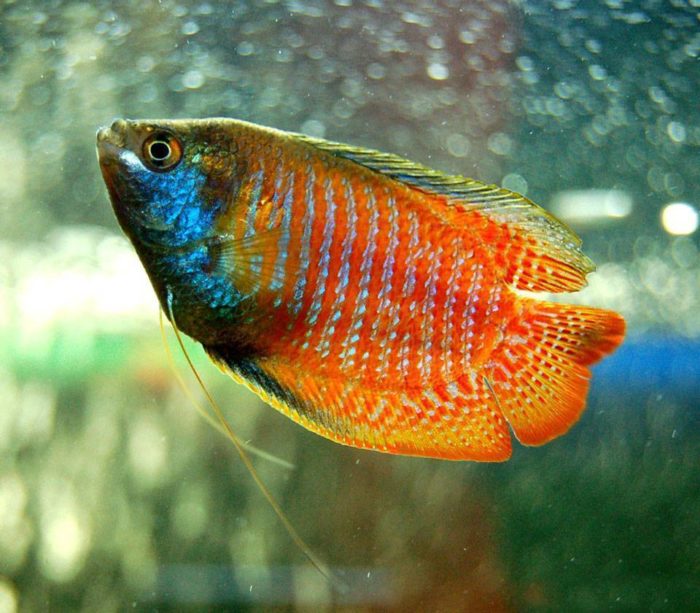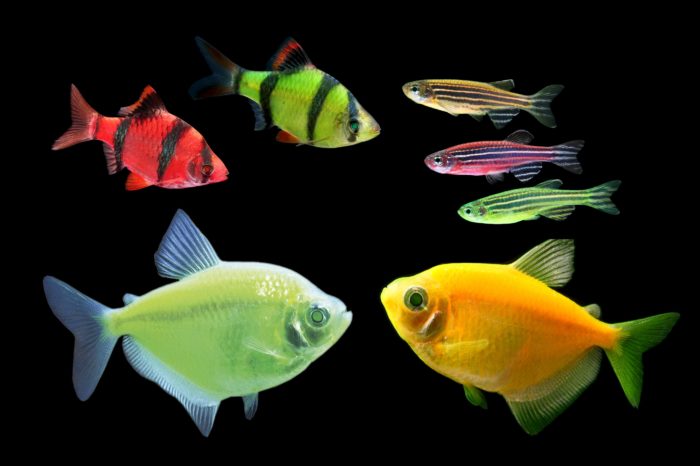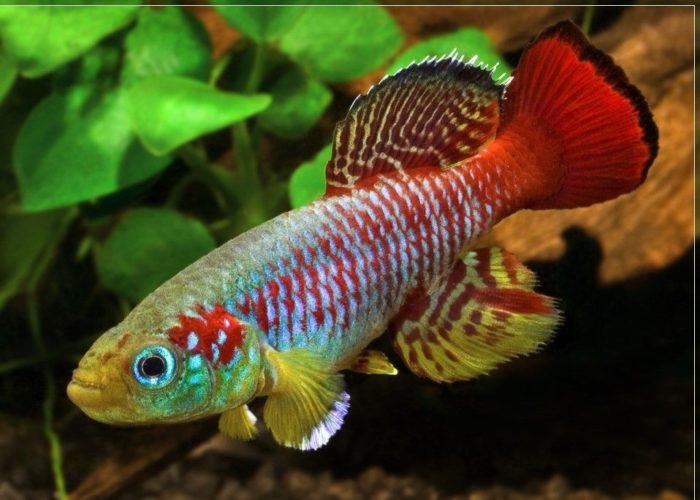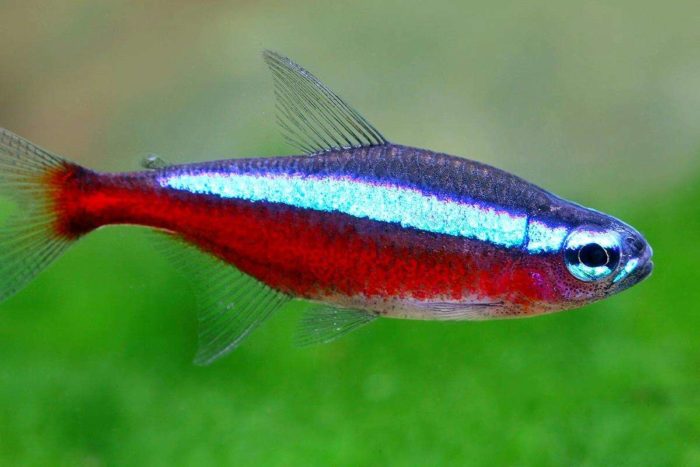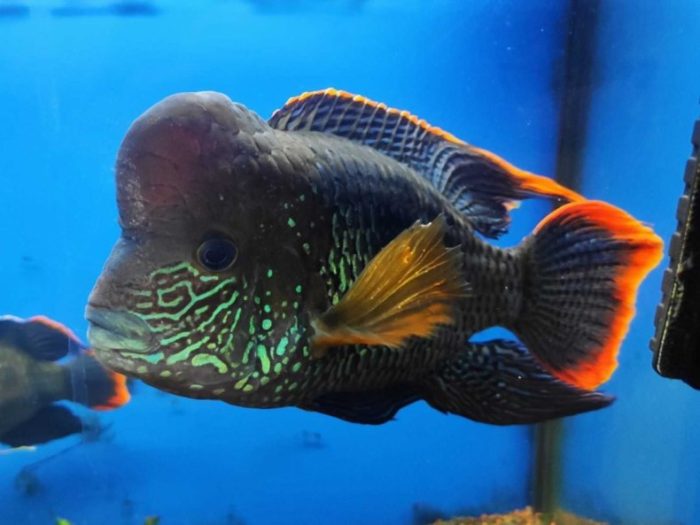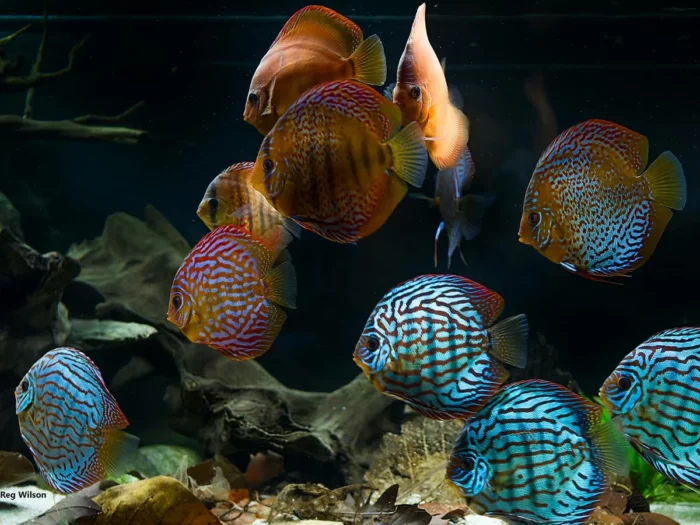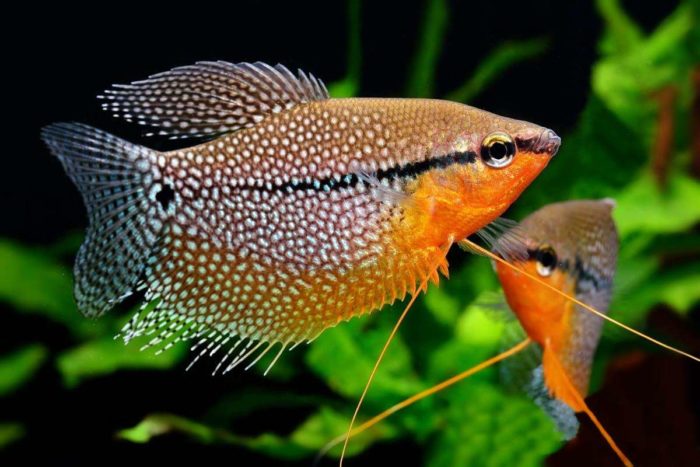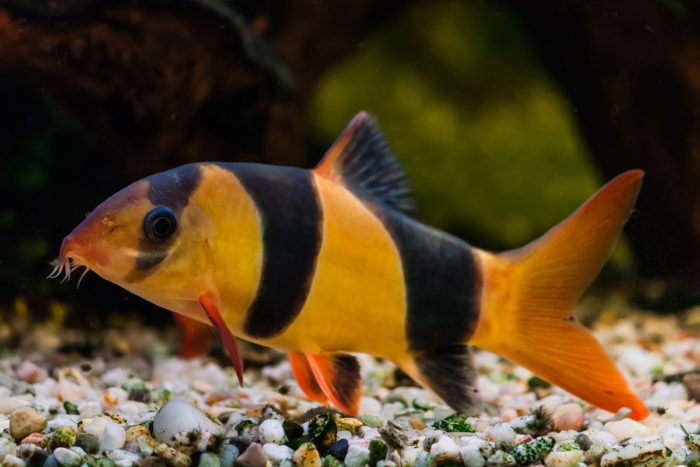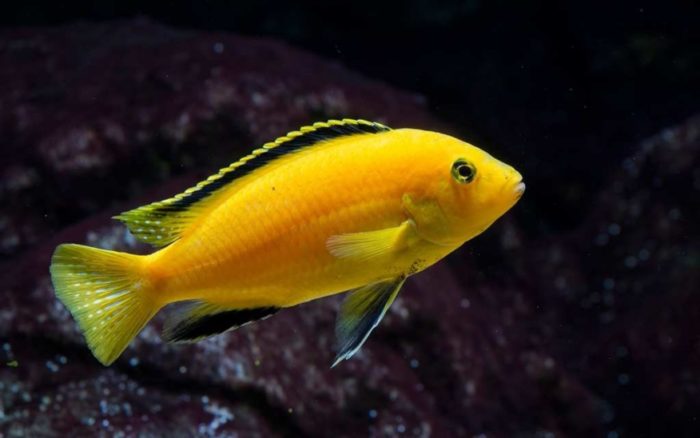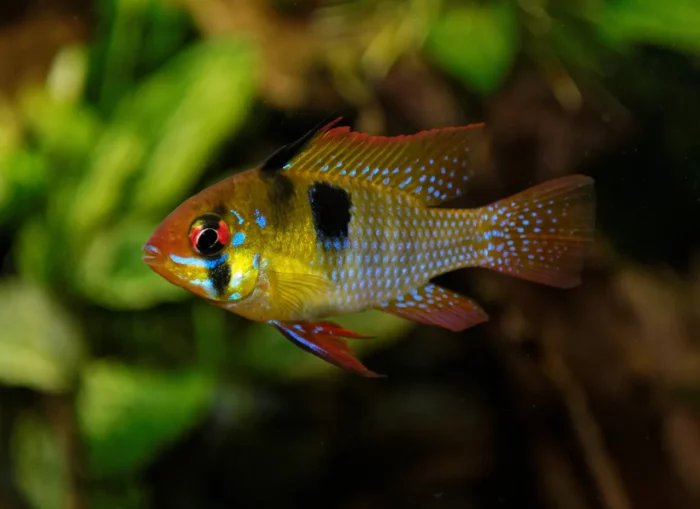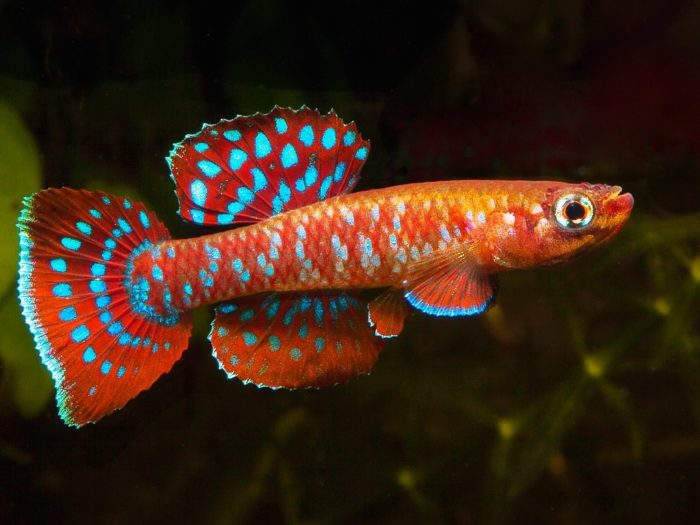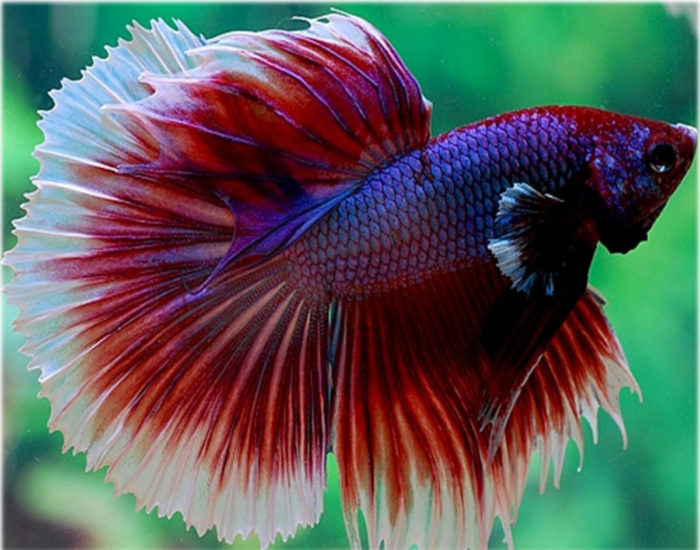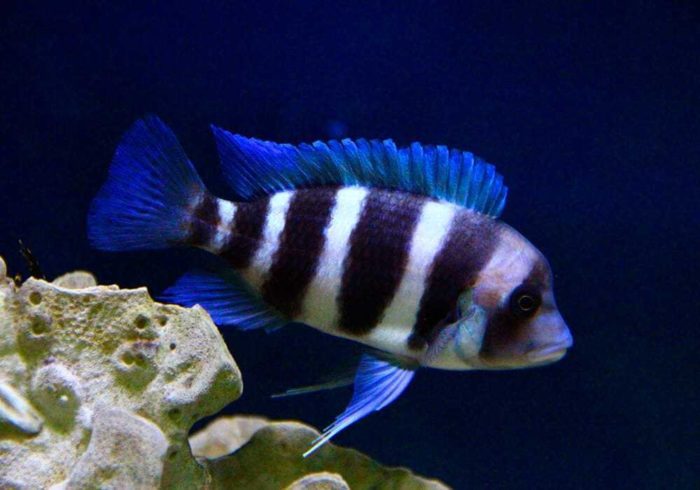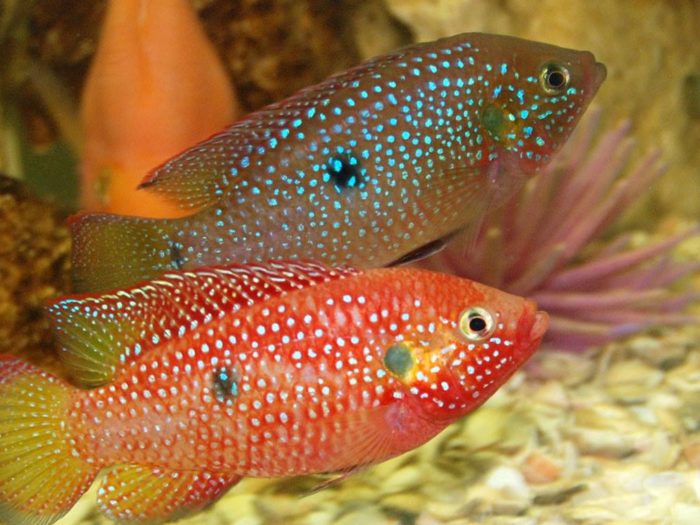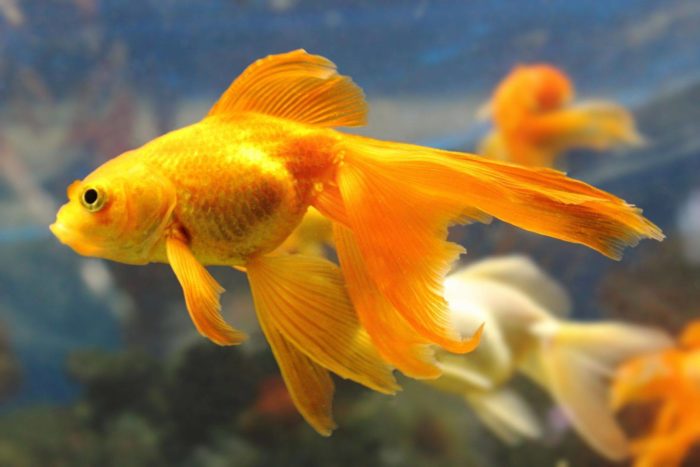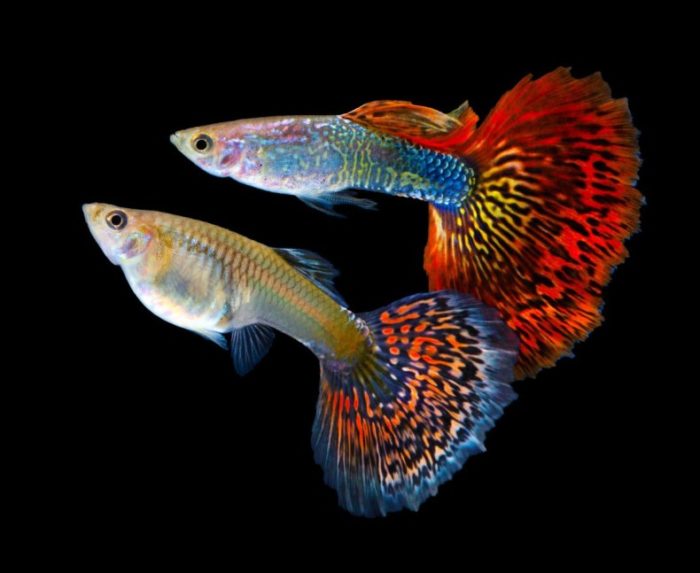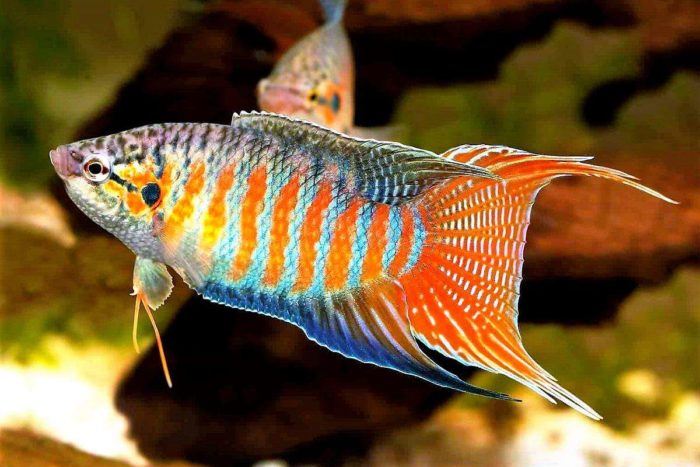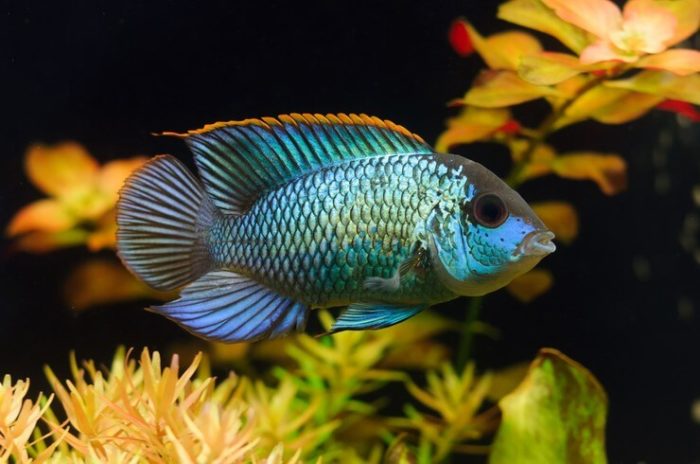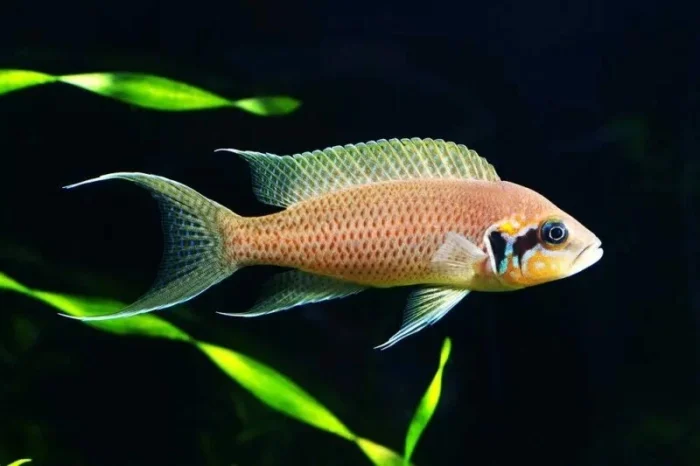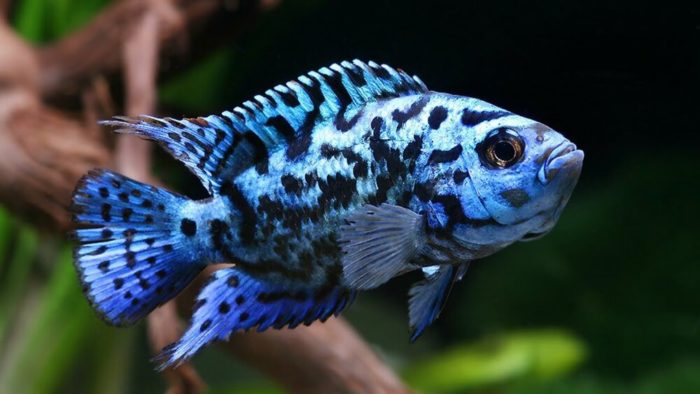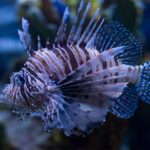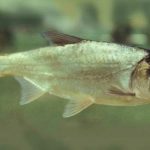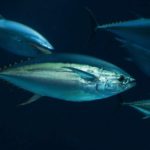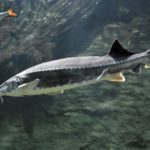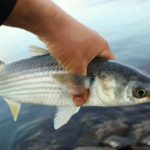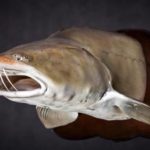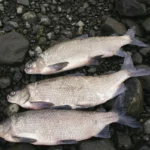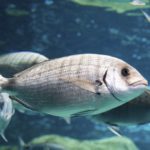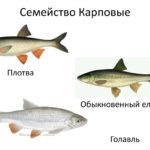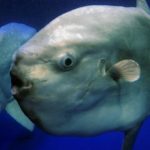Of the 25 thousand species of fish existing on the planet, a very small number have an interesting and striking appearance. In nature, fish need a bright appearance as a means of camouflage and attracting sexual partners. And people breed beautiful fish in aquariums. There is no consensus among aquarists on the question of which fish is the most beautiful. Indeed, each aquarium species is good in its own way. We present the TOP 20 cutest fish, according to aquarists.
Lyalius
A small labyrinthine tropical fish belonging to the Macropod family, popular all over the world, in natural conditions it lives in Indian reservoirs and feeds on algae.
The species is characterized by pronounced differences between individuals of different sexes: females look modest and have a greenish-gray color, but males are real handsome. Their scales are silver, decorated with red and blue stripes, their eyes are golden, and their pectoral fins have an unusual thread-like shape. The length of an adult fish reaches 6-8 cm, the body is elongated and graceful. For sodaTo keep a flock of laliuses you need an aquarium with a capacity of 100 liters.
| pros | Minuses |
| Compatible with most species of similar size
peaceful character non-fearful, sociable behavior |
possible manifestation of aggression towards males of its own species |
Glofish
In English, the name of the fish is written as "GloFish". These beautiful aquarium fish do not exist in nature. They were bred in 2003 by breeders using genetic engineering methods. The genes of marine coelenterates have been introduced into the genetic structure of fish, thanks to which their body has acquired the ability to fluoresce, that is, glow.
If you place a fish under an ultraviolet lamp, it will begin to glow with neon light, like an advertising sign. But even under normal conditions, these fish are unusually beautiful, distinguished by their rich colors of different shades. First, green glofish fish were bred, later pink, blue, red, and orange ones appeared.
| pros | Minuses |
| ease of keeping in an aquarium
inheritance of fluorescent properties endurance, innocence peaceful, sociable character |
the need for flock keeping |
Nothobranchius
This is a carp-toothed fish with a unique way of life, originating from Central African lakes. This is one of the few planet species whose cyclical life is closely related to the seasonality of precipitation. Fish of this species emerge from eggs with the arrival of the rainy season, reach reproductive maturity in the shortest possible time, and manage to spawn before the onset of the dry period. That is, the life cycle of these fish is short, but the eggs are preserved in unfavorable conditions and remain viable for up to six months.
The popularity of the small schooling fish in the aquarium hobby is due to its unusual physique and strikingly beautiful color, reminiscent of a tropical flower. The body size is 5-10 cm. The color of the fish comes in all the main colors of the palette. The external feature is a black stripe crossing the eyes.
| pros | Minuses |
| variety of colors
active, playful behavior |
short life expectancy
demanding aquarium conditions |
Neon red
This small aquarium fish is one of the most beautiful species of the Characin family. Despite its small size, not exceeding 5 cm, this freshwater fish, which lives in tropical waters, surpasses in brightness of color many beautiful species of coral reefs of the ocean. The fish is schooling, and it is advisable to keep a large school in aquariums. Not only because it’s calmer for the fish, but also because a large school shimmering with neon light looks unusually impressive.
The external feature of red neons is two stripes running lengthwise across the body. One stripe is blue, shining with neon light. The second is deep red. The belly of the fish is light.
| pros | Minuses |
| extraordinary brightness of color
compatibility with small, peace-loving aquarium fish possibility of launching into an aquarium with live vegetation |
demands on the purity and quality of the chemical composition of water
sensitivity to stress factors |
Akara turquoise
This is a South American cichlid, nicknamed the “butterfly fish” for its beautiful and unusually bright color. The scales on the body are turquoise blue, they are so bright that they seem to glow in the water. Green spots and stripes are noticeable on the head. A light yellow border is clearly visible on the caudal fin, as well as on the elongated anal and dorsal fins. Males differ from females in being more saturated in color and often having a fatty bump on the head.
Like many cichlids, the turquoise acara has a large body, growing up to 30 cm. To keep several of these fish, an aquarium with a capacity of at least 300 liters is required. The species is gregarious, so a single individual without relatives will feel uncomfortable. The aquarium water should be soft, and it is advisable to plant a lot of underwater vegetation. The cichlid feeds on both live and dry food. Moreover, it is advisable to change the composition of the feed so that the color of the fish becomes brighter.
| pros | Minuses |
| carelessness
Possibility of keeping in both fresh and slightly salty water undemanding diet |
extreme manifestation of territorial aggression, even towards fish of similar size
Possibility of keeping only in a species aquarium |
Discus
Aquarists deservedly call these beautiful and smart fish from the Cichlid family, which live naturally in the Amazon basin, “freshwater kings.” They are so smart that they can be trained to grab food directly from their owner's hand. In nature, discus prefer to live in schools in slow-moving watercourses, feeding on larvae and aquatic insects.In aquariums, discus fish like the abundance of multi-level decorations and shelters.
Discus fish attract attention with their original physique and bright color. They can safely be called the most popular cichlid fish in the world. An adult reaches 20 cm. In a multi-species aquarium, they always attract attention. These fish are distinguished by a flattened body, like a flounder, but vertically oriented. It seems as if multi-colored disks decorated with dot and linear patterns are floating in the aquarium.
| pros | Minuses |
| accessibility of care and maintenance even for beginner aquarists
wide variety of colors |
sensitivity to the degree of hardness and acidity of water
demands on feed quality |
Pearl gourami
Today, this beautiful labyrinth fish is one of the most sought after aquarium species. The silvery scales of the gourami have a light lilac tint and are richly decorated with light iridescent spots. During spawning, the spots become even brighter. Male gouramis are more intensely colored than females. Also, males have longer and more pointed fin rays. The pelvic fins of gourami are transformed into thread-like processes with high tactile sensitivity. These beautiful fish grow up to 10-12 cm. They live long, and are also smart and recognize their owners.
Gourami fish is notable for the fact that, having a special respiratory organ, it is able to absorb oxygen not only from water, but also from the air. Therefore, the aquarium for this fish should always be open. Gourami like soft water and plenty of nooks and crannies in the aquarium.
| pros | Minuses |
| peacefulness, harmoniousness with other calm species
unnecessary aeration of the aquarium unpretentiousness in care and maintenance |
timidity
sensitivity to purity, temperature and acidity of water susceptibility to swim bladder pathologies |
Botia clown
A large and beautiful fish from the Loach family received its name because its color is as bright and colorful as a clown suit. Another name for the aquarium species is tiger loach, as its light orange scales are complemented by three wide black stripes.
In aquarium conditions, the botia grows up to 25 cm. It prefers to be kept in schools, so the aquarium must be voluminous. These fish are bottom-dwelling and prefer dim lighting and plenty of shelter. It is advisable to make several large grottoes in the aquarium.
| pros | Minuses |
| Compatible with any species of similar size
Possibility of keeping even cichlids that are naturally aggressive |
frequent aggression towards members of their own species
the need to hide in shelters with the whole flock |
Labidochromis yellow
As the name suggests, this beautiful aquarium fish, a cichlid, is notable for its rich yellow color. Sunny yellow scales are complemented by a black stripe at the top of the dorsal fin and black anal and pectoral fins. The fish grows up to 20 cm, aquarium keeping should be purely school, 6-10 individuals. Therefore, it is clear that the aquarium must have a capacity of at least 150 liters.
In nature, Labidochromis lives in Lake Malawi and some other Central African and West African bodies of water, preferring to feed on algae and mosses growing on coastal underwater rocks. This is one of the calmest and most peaceful representatives of cichlids. In aquariums, this fish likes the abundance of decorative elements, grottoes and plant thickets in which it can hide.
| pros | Minuses |
| non-aggressive nature
unpretentiousness in nutrition |
requirement of large space for comfortable aquarium living |
Apistogram of Ramiresi
The small South American cichlid grows up to 7 cm. The color of this fish is a real miracle, an unimaginable riot of all colors and shades. It seems as if a rainbow has spilled onto the fish. An interesting external feature of the fish is the vertical black stripe crossing the eyes. And the dorsal fin in the front ends with a funny black crest.
| pros | Minuses |
| peaceful behavior, livability with most non-aggressive aquarium fish
Possibility of breeding in aquariums with live plants |
sensitivity to temperature fluctuations in water |
Afiosemion
Tropical labyrinth carp-toothed fish, 3-6 cm long, in natural conditions lives in swampy and forest reservoirs of central and western regions of Africa. Like all labyrinthine species, this fish has a special respiratory organ that allows it to obtain oxygen from both water and air. In nature, representatives of the species are forced to live in difficult conditions: their life cycle is associated with alternating periods of rain and drought, with periodic changes in the composition of water. Thanks to air breathing, these fish survive even when the reservoir completely dries out. Afiosemion feeds on insects falling into the water, which it catches with its mouth curved upward.
In the aquarium hobby, this fish is popular for its intense colors. Each variety has an individual pattern on the body, and the color can be very different: all shades of green, blue, red, purple. The body of the fish is elegant, elongated, the caudal fin has an unusual shape with three ends. A 60 liter aquarium is sufficient to keep these fish. The water temperature should be strictly +22-25°C, and the acidity should be 6-7 pH.
| pros | Minuses |
| endurance, resistance to adverse factors
calm, peaceful character |
impossibility of keeping with veil-tailed fish, whose fins the Afiosemion bites off
sensitivity to temperature and acidity of water |
Cockerel
This macropod fish from Southeast Asia has been considered one of the most popular fish in the aquarium hobby for many years. The species received its name for its fighting character, pugnacity, which is why Asians have long used cockerels in fish fights. Under natural conditions, cockerels live in clean rivers and streams and are able to breathe both oxygen dissolved in water and atmospheric oxygen.
Aquarists love bettas for their varied colors, which change depending on the surrounding conditions and the condition of the fish, and for their luxurious veil-shaped caudal fin. Males are usually brighter than females. In nature, such brightly colored cockerels as in aquariums do not exist; they are bred through selective breeding. The length of an adult fish reaches 5 cm.
| pros | Minuses |
| low maintenance
Hassle-free maintenance, suitable for beginner aquarists spectacular appearance |
aggressive nature, not compatible with all types of aquarium fish |
Frontosa
Another name for the species is Cameroon fish. This is a predatory cichlid that lives naturally in the African Lake Tanganyika. This is one of the most beautiful and interesting aquarium cichlids. The fish can grow up to 30 cm, and it is advisable to keep a small group of 2-3 individuals in aquarium conditions. Therefore, the aquarium must have a large capacity - from 300 liters. In nature, fish feed on mollusks and small fish; at home, they can be fed with fish fillets, squid, and shrimp.
The fish looks massive and impressive. In the largest individuals, a fatty lump forms on the head.The color of the frontosa is rich, the body is decorated with 5-7 alternating black and silver-light stripes.
| pros | Minuses |
| endurance, strong body
calm, reserved behavior unpretentiousness in nutrition |
Possibility of living next to each other in an aquarium only with fish of similar size; small items will be immediately eaten |
Handsome Chromis
The African cichlid did not get its name by chance. The color of the fish is truly stunning, fabulous: it’s not for nothing that aquarists around the world called this fish “jewel.” The orange-red scales are abundantly strewn with bluish-white specks. It seems that the fish is all strewn with sparkles or beads. Chromis's eyes are bright orange and shiny, like stars. The fish is large, growing up to 20 cm, so for a couple of individuals an aquarium with a volume of at least 60 liters is recommended.
| pros | Minuses |
| interesting intraspecific relationships to observe
activity, fast and varied movements |
pronounced territorial aggression
Possibility of keeping only fish of equal size |
Veiltail
This variety of goldfish is considered the most beautiful; it is extremely in demand in the aquarium hobby. These fish belong to the genus of guppies and live in South American waters. The main external advantage of the veiltail is its luxurious, elongated, flowing, like a real veil, translucent fins, which are 3-5 times longer than the ovoid body, especially in males. The most common colors of fish are red, cream, gold, and black. Spotted individuals are popular.
In aquarium conditions, the fish does not exceed 10 cm, but since it has lush fins, the size of the aquarium for one individual should be at least 50 liters.The decor in the aquarium should not contain objects with sharp corners and edges, on which the fish can scratch its luxurious fins.
| pros | Minuses |
| variety of colors
calm, peaceful, sociable character possibility of coexistence with small non-aggressive fish species unpretentiousness in care and maintenance, making the species suitable for inexperienced aquarists |
tails susceptible to injury
voracity |
Guppy
This is the most popular small aquarium fish, an ideal pet for beginners. Guppies are not at all capricious, but this does not mean that you do not need to keep the aquarium clean and tidy and feed your pets well. The fish is sold in any pet store, bred a long time ago, but has not yet lost its popularity, it is truly beautiful and interesting. Breeders have bred an incredible number of varieties, differing in color and tail shape.
| pros | Minuses |
| incredible variety of colors
unpretentiousness peaceful and calm behavior, livability with any non-aggressive species trouble-free reproduction in aquarium conditions |
need for population control due to rapid reproduction |
Macropod
This is one of the oldest aquarium species. Beautiful and bright fish, growing up to 10 cm, originating from the reservoirs of Southeast Asia, are distinguished by nimble behavior and activity. Like all labyrinth fish, the macropod likes to rise to the surface of the water to breathe atmospheric air. The macropod is notable for its unusual body shape and large fork-shaped caudal fin. The color is marsh green or blue with an abundance of transverse stripes and spots.
| pros | Minuses |
| endurance, unpretentiousness, resistance to adverse factors
intelligence, ability to learn activity, interesting behavior |
aggressive nature, territoriality, tendency to fight with representatives of other species
fading of color depending on background color and lighting |
Nannakara neon
An unusual hybrid fish species was obtained by crossing South American cichlids. The fish is extremely beautiful, so its popularity among aquarists is not surprising. The scales are blue with a pearlescent tint and intricate patterns; the large dorsal fin is decorated with a yellow edging.
The fish grows up to 6-13 cm and requires schooling of 6-8 individuals. Therefore, the minimum volume of the aquarium should be 60 liters. These pets love to have a lot of plants and hiding places in the aquarium.
| pros | Minuses |
| friendly and peaceful behavior
endurance, good health |
demanding conditions of detention |
Princess of Burundi
The real name of the species, found only in Lake Tanganyika, is Neolamprologus Brichard. The cichlid fish deservedly received its nickname. It is small, no more than 10 cm in length, but it looks truly royally beautiful and elegant. The scales are pink-beige with yellow dots, the lower part of the head is decorated with a fancy blue pattern, the fins have a blue border, and black stripes run from the eyes to the gills. The caudal fin is fork-shaped. Since the species is gregarious, for aquarium keeping it is recommended to purchase a group of 5-7 individuals and a tank with a capacity of 100 liters or more.
| pros | Minuses |
| peaceful, calm disposition
active, lively, sociable behavior unpretentiousness |
territoriality
desire to dig into the ground |
Blue Dempsey
This name was given to a variety of cichlazoma with a special color: intense blue with a shining effect, with black and white stripes.This is one of the beautiful Central American cichlids. It is better to house these fish in pairs, and since they reach a length of 20-25 cm, the recommended aquarium volume is 150 liters. Under natural conditions, these cichlids live in rivers with a sandy or small rocky bottom, are omnivorous, and live up to 10 years.
| pros | Minuses |
| interesting intraspecific behavior
calm nature, can be kept with other species of cichlids of similar size long life expectancy |
gluttony, tendency to obesity
aggressive behavior, especially during the spawning season |

